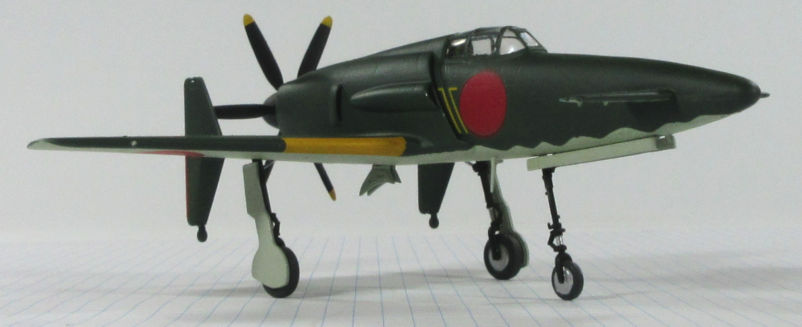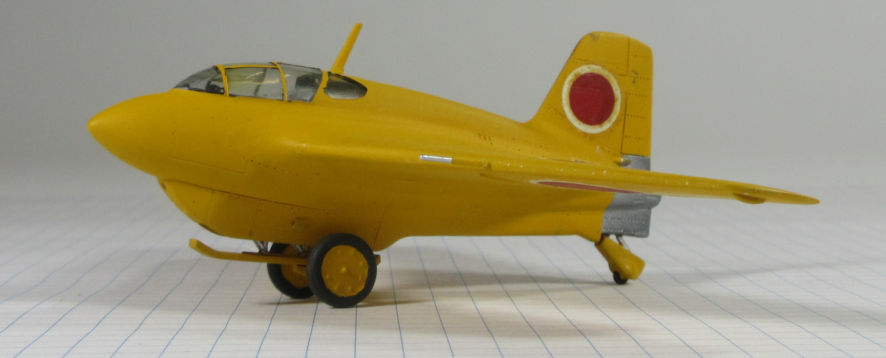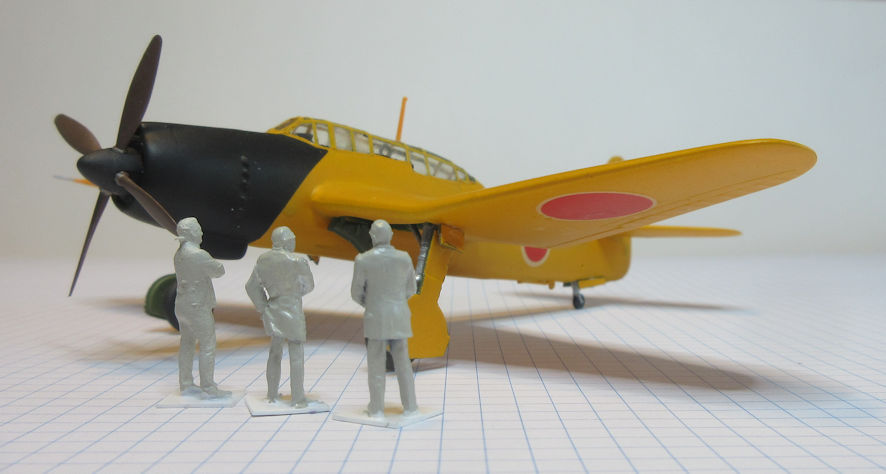Late Imperial Japanese Navy Aircraft
Kyushu J7W1 – Mitsubishi J8M1 – Aichi B7A1
Last time we looked in the gallery of aircraft of sundry nations and found there are equal numbers of Italian and Japanese aircraft. Then we looked at some Italian aircraft so this time let’s look at some Japanese aircraft.
It turns out that, in this gallery at least, the Imperial Japanese Navy is more popular than the Imperial Japanese Army. So I thought it might be interesting to select three aircraft that flew for that service. To make it more interesting let’s look at three of the more obscure, exotic one might say, aircraft that that navy flew. The reason that they are obscure is because the end of the Pacific War in 1945 brought an end to their careers before they really got started.
Kyushu J7W1 in 1/72 by Hasegawa
In the Imperial Japanese Navy’s aircraft designation system the first letter designates the role of the aircraft, in this case ‘J’ stands for land based aircraft. The J7W1 was designed with the idea of creating an aircraft capable of countering America’s B-29s and one that could be fitted with a turbojet engine when they became available. In the meantime it was to be fitted with the powerful Mitsubishi Ha-43 1,590kW radial piston engine. First the canard design was tested on gliders and, when that was successful, design work began in mid 1944. The first of two prototypes was complete and made three short flights before the war ended. A replica is on show in Japan and one of the prototypes is in the National Air and Space Museum in the United States.
The first kit of this aircraft was published by Tamiya in 1965, before Tamiya became the Tamiya we know today. It was a good kit for its time but not really acceptable by today’s standard. For that you have to use the Hasegawa kit that was first published in 1995 and has been re-released several times since, most recently in 2020. It is a good kit but perhaps a little simple, so you can make all kinds improvements to it if you feel the need. I think it looks rather spectacular with its canard design and long, stalky legs, so I made this one straight out of the box. If you want tips about how to make a more detailed model this build commentary on the International Scale Modeller Forum should help.
Mitsubishi J8M1 in 1/72 by Hasegawa
Like the J7W1, the J8M1 was developed to counter American B-29 bombers. It was based on the Messerchmitt Me163 rocket fighter which was to be license built in Japan. However the Me163 that was sent to Japan to serve as the starting point for the Japanese version was lost on the way from Germany and all the Japanese designers had to work from was some manuals. The result was similar to the Me163 but with different details. This was a joint project between the Imperial Japanese Navy and Imperial Japanese Army which called it the Ki-200. It crashed during its first flight in July 1945 and the war ended before testing could resume. Restored J8M1s can be seen in museums, one in Japan and the other in the United States.
If you want to make a model of this interesting little aircraft the choice seems to lay between the Hasegawa kit that was published in 1995 and the MPM production from around the same time. I haven’t seen the MPM kit, and while it might have some details lacking from the fairly simple Hasegawa kit, it is also a limited run injection moulded kit while the Hasegawas kit is a full scale industrial kit in very good quality plastic so it would probably be easier to add some detail to the Hasegawa kit, particularly in the cockpit, than to struggle with the MPM kit. When it comes to colours you might make it in standard Imperial Japanese Navy green and grey but I thought the orange-yellow of the prototype looked more striking. I’ve written a Workbench Note about this model that you might find useful.
Aichi B7A1 in 1/72 by Fujimi
This aircraft was designed for the Imperial Japanese Navy to replace its existing dive and torpedo bomber aircraft and fly from its new generation of large Taiho-class aircraft carriers. The first prototype flew in May 1942 but teething problems with the engine and airframe modifications meant it did not begin production until May 1944. A total of 114 were produced but, by the time it was ready for service, Japan had no aircraft carries large enough to accommodate it left, so it was restricted to operating from land bases.
This model was made from the Fijimi kit which was first published in 1984 and has appeared in quite a number of different boxings, sometimes as the earlier B7A1 and also the B7A2, which are both very similar. I liked the all-over orange-yellow of the prototype so this model was made as a B7A1. Since then Sword has published a kit of the B7A2 which looks very nice and lives up to that kit manufacturers very good standards. A review of the Sword kit in IPMS/USA Reviews compares the two kits and suggests that, while the Sword kit is the better one, the old Fuimi kit is still quite serviceable, and cheaper.


